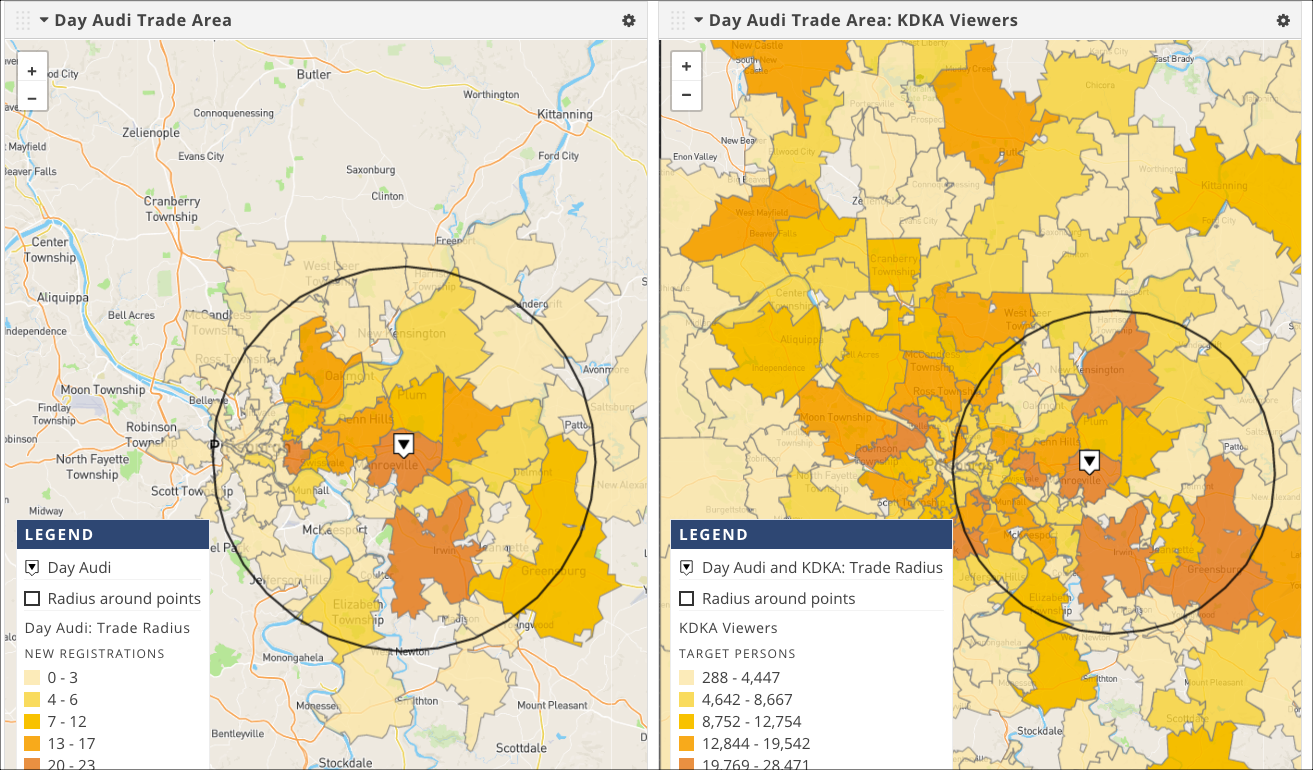Let's say that as part of a sales pitch to Day Audi, the TV station KDKA wants to show the dealership its trade area. By creating a few target series that show station viewership and dealership trade area, the station can make a case that it reaches the customers inside Day Audi's core trade area. This makes for part of a compelling sales story.
Show the Dealer's Trade Area
In order to show the dealer's trade area, we need to create two target series: one to plot the dealer as a point on the map, and one to create the trade radius around the dealer.
Create and save a presentation.
Create a new target series to show the dealer's location on the map. This series uses Polk New Registrations, it's grouped to the Dealer attribute, and it takes the Dealer and DMA attributes as its target filters:
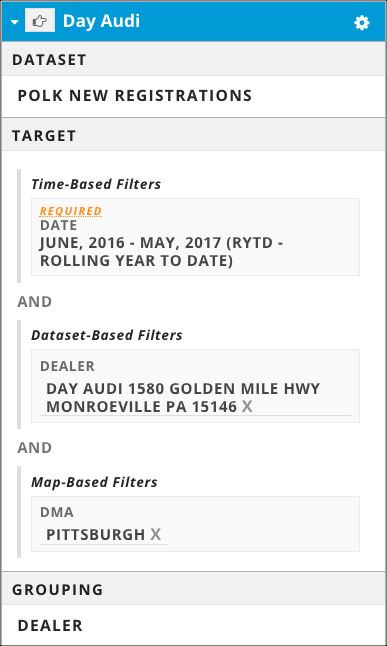
Create a second target series to show the trade radius around the dealer. This series also uses Polk data, but it shows which ZIP Codes Day Audi's registrations occurred in relative to the dealer's location, thereby giving insight into where customers live.
On the Select a Dataset page, type or select Polk New Registrations.
On the Select a Target page, enter Day Audi in the Dealer attribute, and then switch to the Map-based tab to define the trade area.
Expand the Radius Around Points attribute on the Map-based tab.
Enter a trade area distance of 15 miles.
In the Point Source drop-down, select Points From Another Series' Grouping, and then select the Day Audi target series. This is the series we created in Step 2.
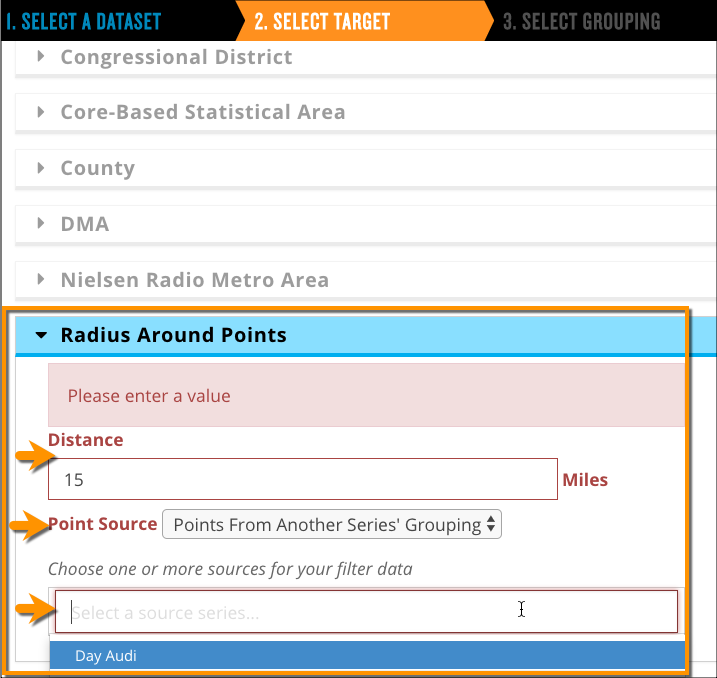
In the Select Grouping page, select the ZIP Code attribute from the Map-based tab.
Give your series a name and save it.
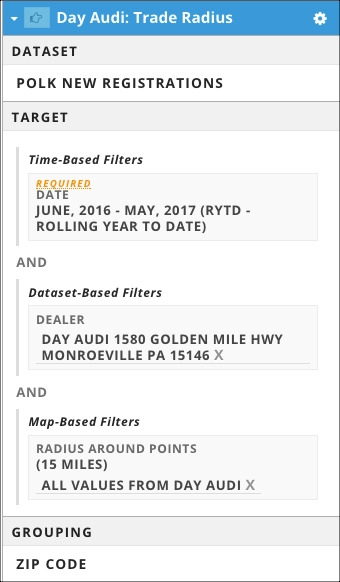
Update your presentation.
Add a map visualization to see Day Audi and its trade radius. Don't forget that the Radius around points shape layer has to be at the top of the layers in order to be seen!
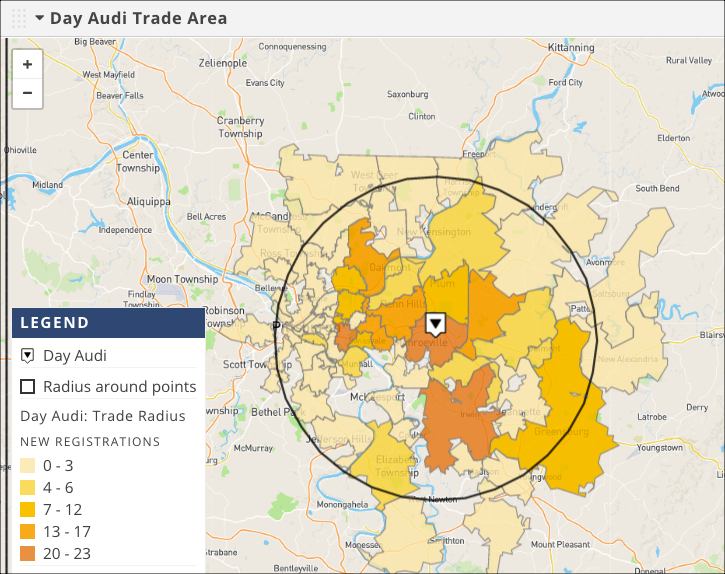
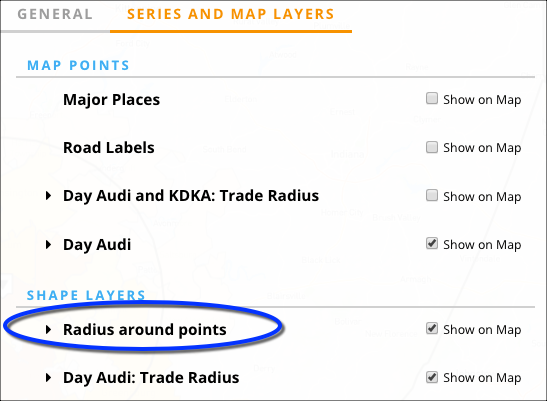
Show Station Viewers
Create a new target series to show KDKA viewership. It uses the Scarborough Local Market dataset, it's grouped to ZIP Codes, and its filters include the TV Station and DMA attributes.
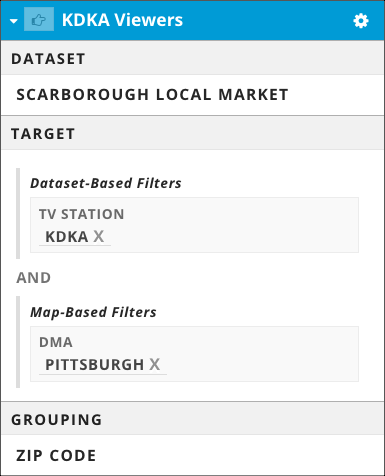
Update your presentation.
Add a map visualization to see KDKA viewership. Make sure to change the Grouping Data Value from Respondents to Target Persons!
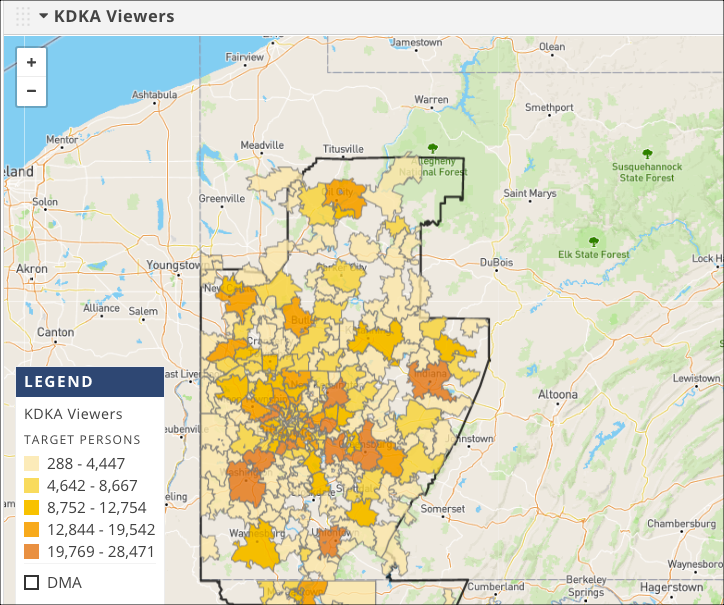
Add the Dealer's Trade Radius to the Station Viewer Map
In this step, we need to create one more target series that will put the dealer's location on the map along with his trade radius, but will not include any registration data. This allows us to overlay the dealer's trade radius with the station viewership without competing data (viewership versus registrations).
Create a new target series that uses Polk as the dataset.
In the Select Target page, enter Day Audi in the Dealer attribute on the Dataset-based tab.
Switch to the Map-based tab and expand the Radius Around Points attribute.
Create the trade radius by specifying the distance (15 miles) and entering the dealer's address (1850 Golden Mile Highway, Monroeville, PA 15145).

Click Select a Grouping.
From the Dataset-based tab, click the Dealer attribute.
Name and save your target series.

Update your presentation.
Update the KDKA Viewer map to add the new series we just created, as well as the Radius around points shape layer.
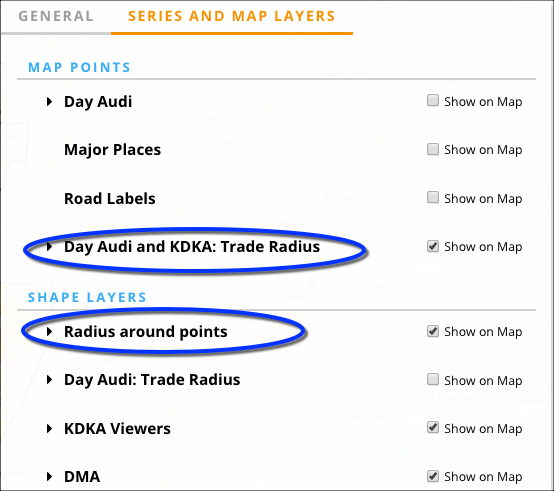
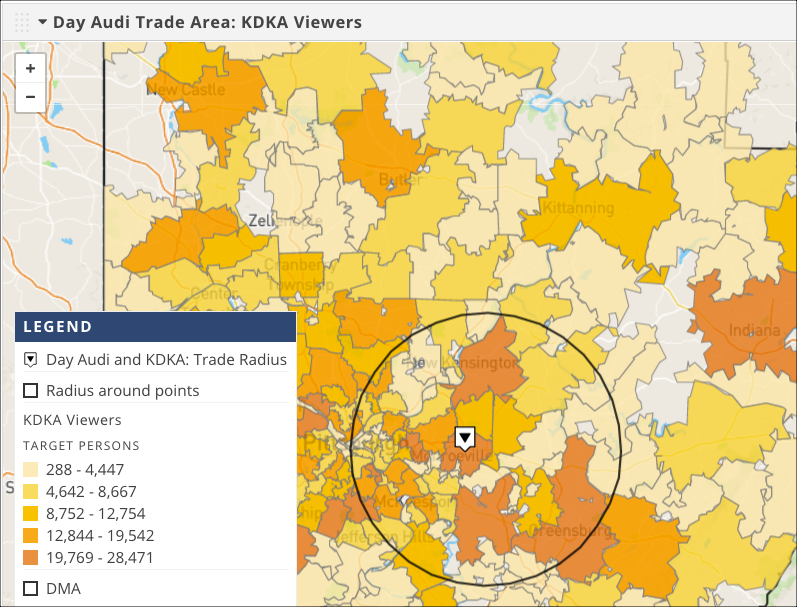
To really show an interesting story of how the dealer's sales overlap with KDKA's viewers, you can place the maps side-by-side:
